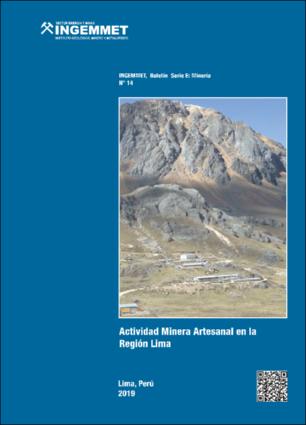Please use this identifier to cite or link to this item:
https://hdl.handle.net/20.500.12544/2399Files in This Item:
| File | Description | Size | Format | |
|---|---|---|---|---|
| E014-Actividad_minera_artesanal_Lima.pdf | Boletín Ingemmet, E-14 | 58.22 MB | Adobe PDF | View/Open |
| E014-Mapa_catastro_minero_1_500_000.pdf | 10.14 MB | Adobe PDF | View/Open | |
| E014-Mapa_distribucion_geoquimica_bloque_centro.pdf | 6.27 MB | Adobe PDF | View/Open | |
| E014-Mapa_distribucion_geoquimica_bloque_norte.pdf | 5.81 MB | Adobe PDF | View/Open | |
| E014-Mapa_distribucion_geoquimica_bloque_sur.pdf | 3.98 MB | Adobe PDF | View/Open | |
| E014-Mapa_geologico_regional_1_500_000.pdf | 10.44 MB | Adobe PDF | View/Open | |
| E014-Mapa_ubicacion_labores_mineras.pdf | 8.77 MB | Adobe PDF | View/Open | |
| E014-Mapa_ubicacion_muestras_accesos.pdf | 8.64 MB | Adobe PDF | View/Open |
This item is licensed under a Creative Commons License












